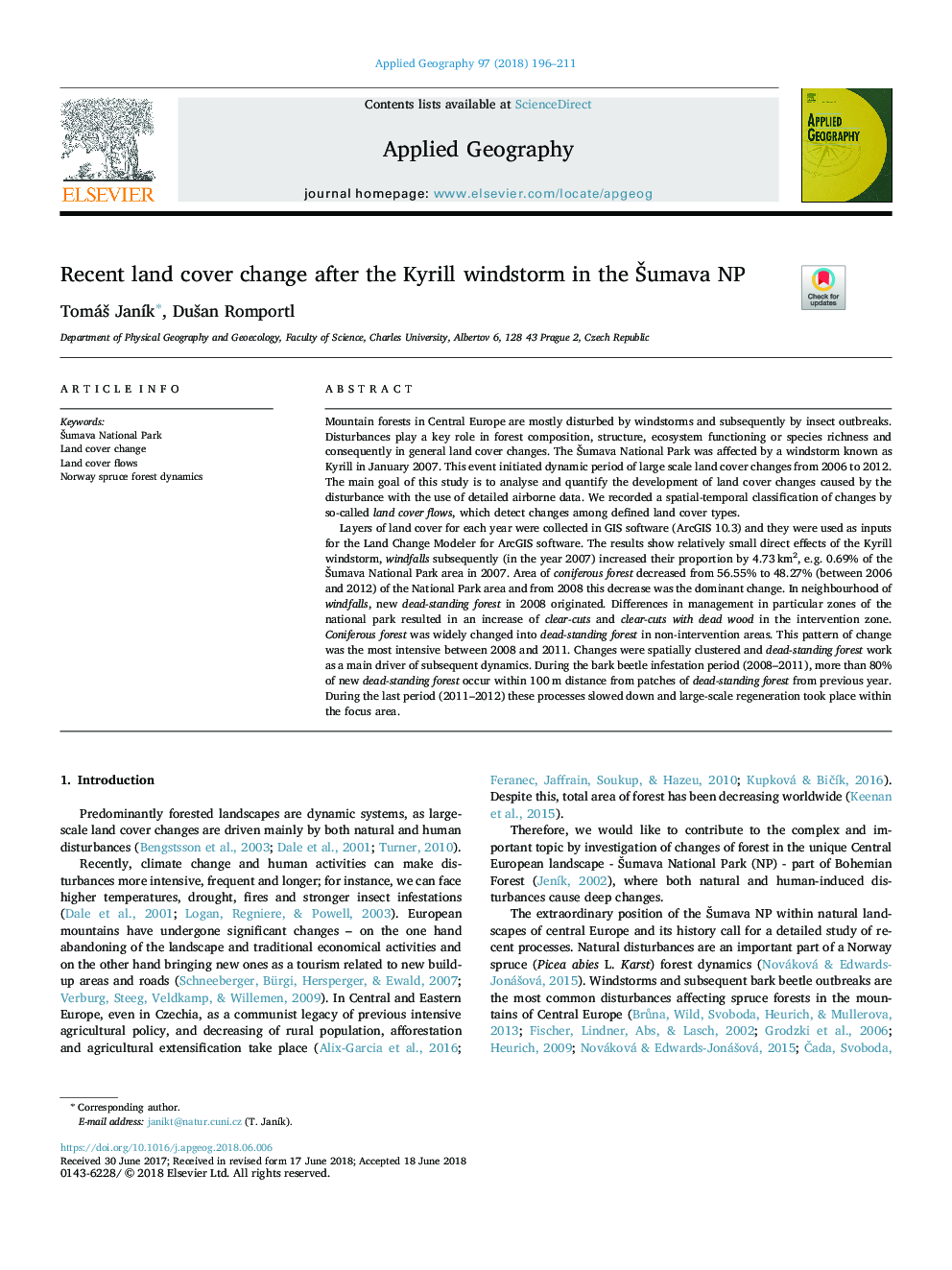| Article ID | Journal | Published Year | Pages | File Type |
|---|---|---|---|---|
| 6538238 | Applied Geography | 2018 | 16 Pages |
Abstract
Layers of land cover for each year were collected in GIS software (ArcGIS 10.3) and they were used as inputs for the Land Change Modeler for ArcGIS software. The results show relatively small direct effects of the Kyrill windstorm, windfalls subsequently (in the year 2007) increased their proportion by 4.73â¯km2, e.g. 0.69% of the Å umava National Park area in 2007. Area of coniferous forest decreased from 56.55% to 48.27% (between 2006 and 2012) of the National Park area and from 2008 this decrease was the dominant change. In neighbourhood of windfalls, new dead-standing forest in 2008 originated. Differences in management in particular zones of the national park resulted in an increase of clear-cuts and clear-cuts with dead wood in the intervention zone. Coniferous forest was widely changed into dead-standing forest in non-intervention areas. This pattern of change was the most intensive between 2008 and 2011. Changes were spatially clustered and dead-standing forest work as a main driver of subsequent dynamics. During the bark beetle infestation period (2008-2011), more than 80% of new dead-standing forest occur within 100â¯m distance from patches of dead-standing forest from previous year. During the last period (2011-2012) these processes slowed down and large-scale regeneration took place within the focus area.
Keywords
Related Topics
Life Sciences
Agricultural and Biological Sciences
Forestry
Authors
TomáÅ¡ JanÃk, DuÅ¡an Romportl,
